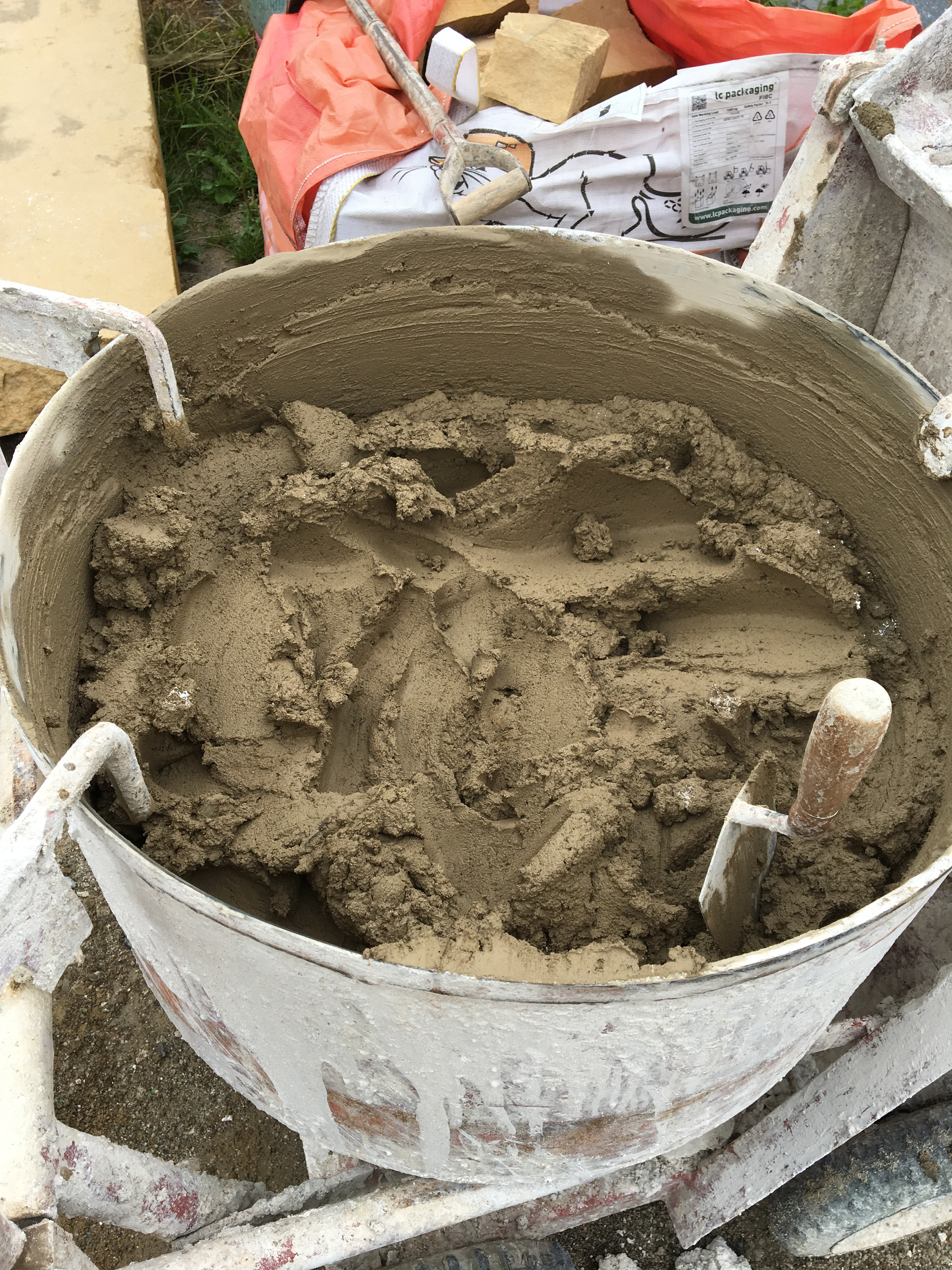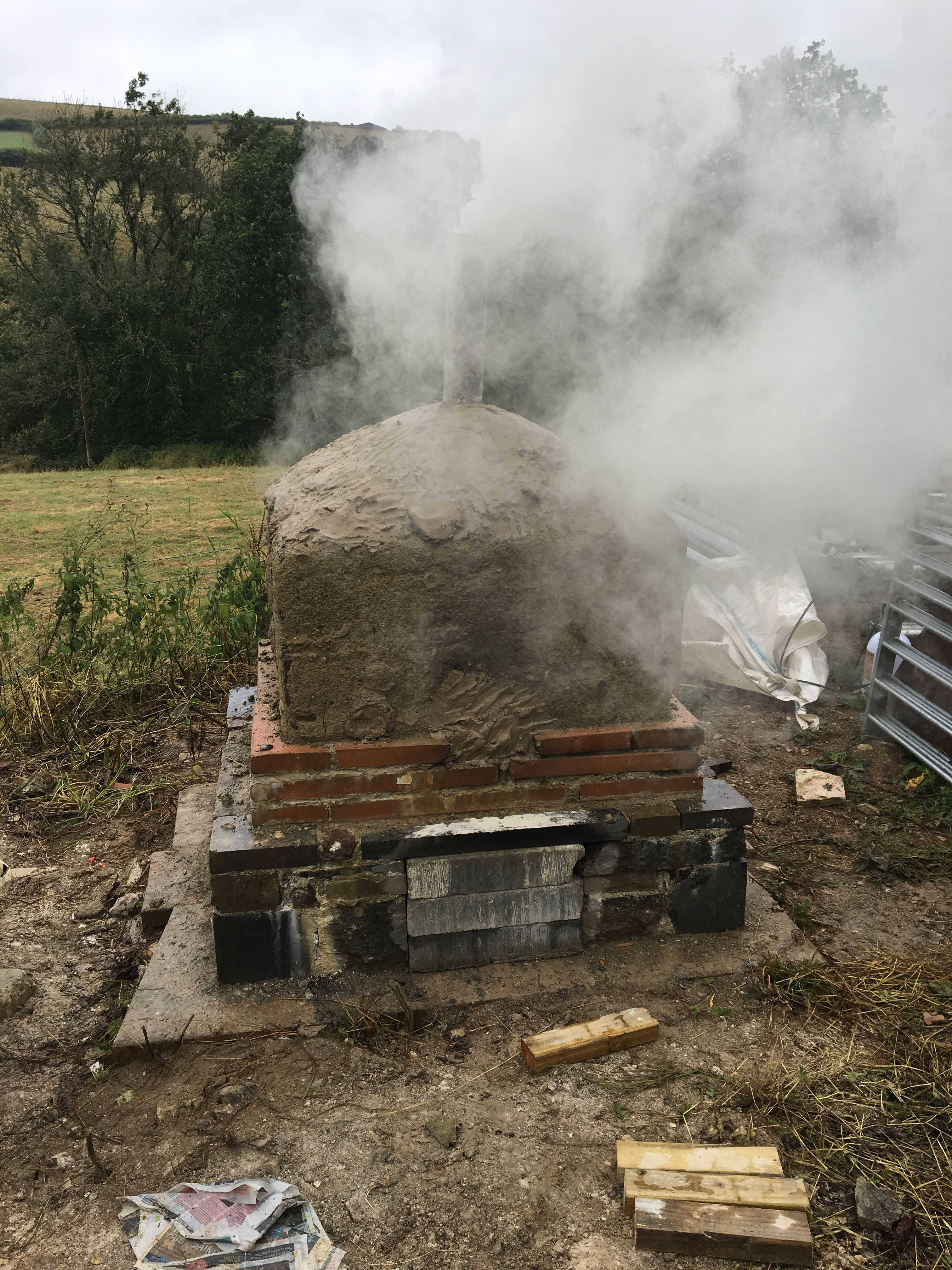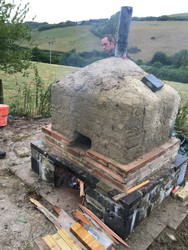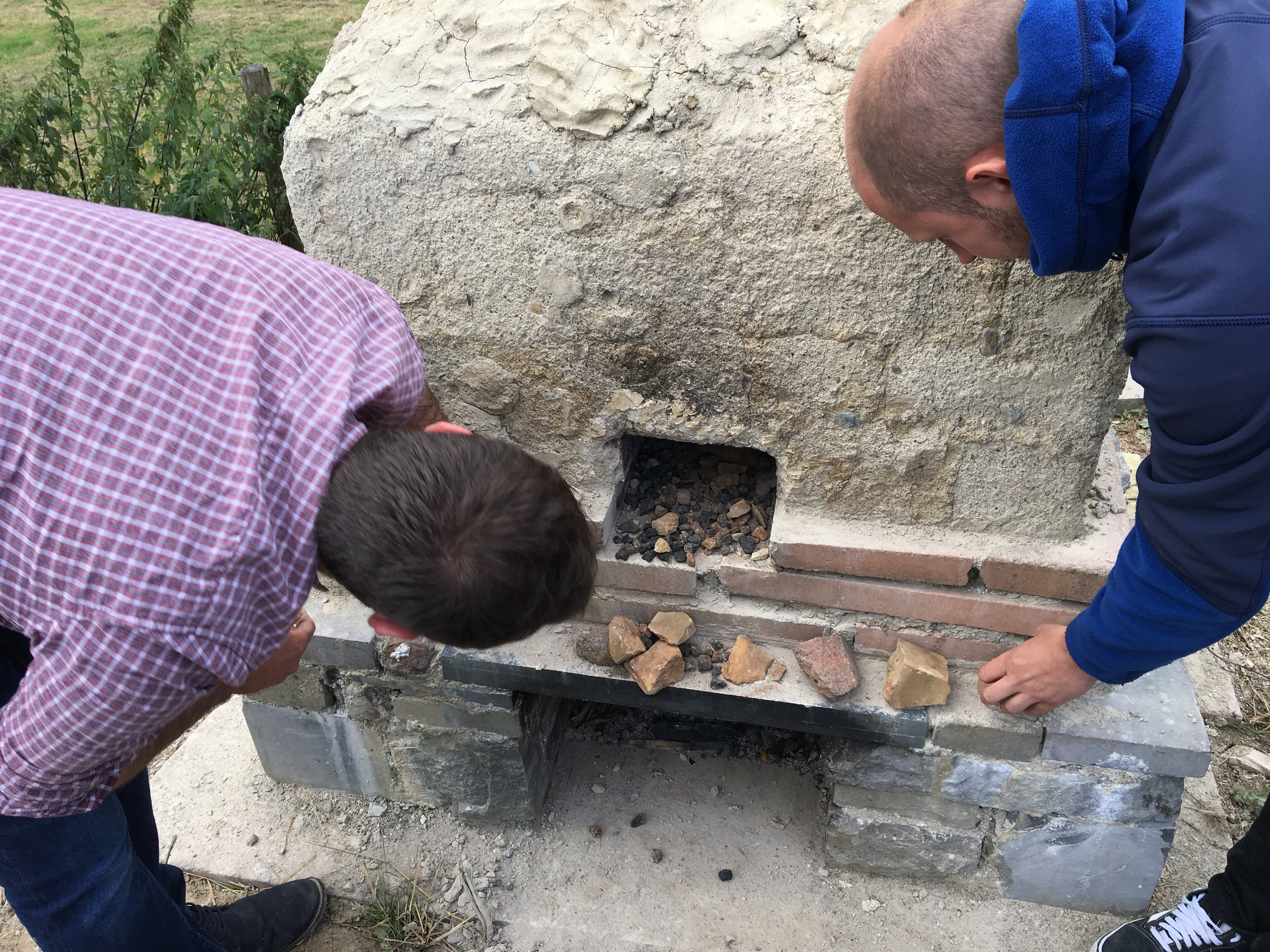Lime Kilns and Hot Lime mortars – a day out at Coe Stone
Posted by Ian, Celtic Sustainables on 10th Aug 2018
I recently spent the day with a group of Stone Masons at this year’s SPAB Fellows, burning lime in a small lime kiln and finding out about hot lime mixes, the benefits of using hot  lime and the possible applications.
lime and the possible applications.
The very welcoming hosts for this occasion were a local stone masonry company - Coe Stone, who have built a small lime kiln in the yard of their rural workshop.
We started the day (after a coffee of course) by mixing up a mortar from earth and quicklime. The mortar was to be used seal the top of the kiln. We used a horizontal pan mixer to mix the mortar something I hadn’t used before. Apparently it’s difficult to mix quicklime mortars (also known as hot mix mortars) in a bell mixer as the sticky mortar sticks to the sides of the drum. Pan mixers have scrapers to keep the mortar away from the edges whilst mixing.
We then loaded up the kiln with a layer of paper and wood kindling and then alternate layers of limestone and blacksmiths coke until the kiln was almost full. We put in 3 different types of limestone: Bath, Ham and Doulting.
A mixture of Bricks, stones and tiles were then placed over the top of the kiln, leaving a gap for a pipe to be placed as a chimney and the top of the kiln was sealed with the earth lime mortar.
The paper and wood was lit, lots of smoke ensued and we went and had another coffee.
Once the kiln looked like it was burning well, the ash-pit entrance and a smaller air vent were sealed up with blocks. The smaller air vent also had a coat of the earth mortar to  completely seal it, whilst the ash pit blocks were left uncovered with small gaps to allow a small amount of air in to feed the fire. Throughout the rest of the day periodic checks were made to ensure the correct amount of airflow was getting in. The kiln was left to burn for 24 hours.
completely seal it, whilst the ash pit blocks were left uncovered with small gaps to allow a small amount of air in to feed the fire. Throughout the rest of the day periodic checks were made to ensure the correct amount of airflow was getting in. The kiln was left to burn for 24 hours.
In the meantime we moved into the workshop to avoid the incoming rain, and Thom from Coe Stone introduced us to the wonderful world of hotlime mortars*. We used quicklime from the last lime burn that was done in the kiln and some commercially available quicklime to mix up some hotlime mortars, and some limewash. They were both great to use, they were very creamy and adhered really well to the substrates. We also got to try our hands at a mortar repair on a stone section from a tracery window.
All in all it was an informative and interesting day. I made a short visit the following day to help unload the kiln. We sorted the quicklime from the bits of unburnt coke and then slaked a few pieces to check that they had properly converted to quicklime. I was even given a few pieces to take away.
*For more detailed information, take a look at my article ‘What is Hotlime’.



